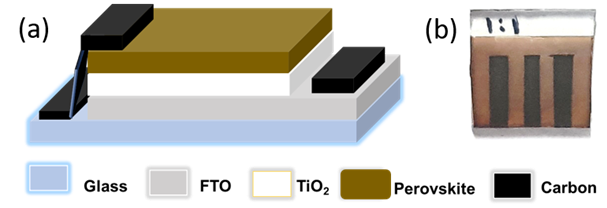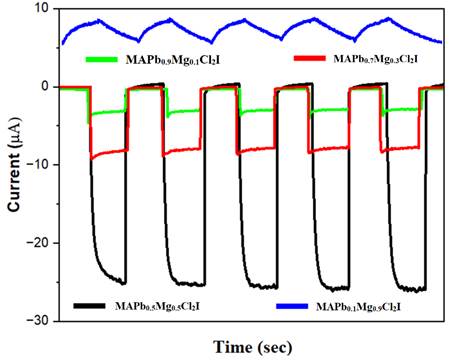Perovskite self-powered broadband photodetector with reduced lead toxicity can help sustainable energy
Indian scientists have indigenously developed organic-inorganic halide perovskite self-powered broadband photodetector with partial substitution of lead by magnesium which can be useful for solar energy generation.
Organic-Inorganic halide perovskite (Methyl Ammonium Lead Iodide, MAPbI3) has been the frontrunner of optoelectronic research, showing promise in solar cells, LEDs, and photodetectors. However, hybrid perovskite has been plagued by significant issue due to presence of toxic lead (Pb2+), which is known for harmful effects on health and the environment.
In a significant study, researchers from the International Advanced Research Centre for Powder Metallurgy & New Materials (ARCI), Hyderabad, an autonomous institute of Department of Science and Technology (DST) have addressed these challenges by introducing an eco-friendly alternative to replace toxic Lead (Pb). The team turned to Mg, an alkaline earth metal known for its non-toxic nature and abundance, as a substitute to lead.
They synthesised the MAPbxMg1-xCl2I perovskite using one-step anti-solvent approach. They carefully tuned the Mg2+ stoichiometry and achieved tetragonal perovskite phase with desired properties. They also fabricated the photodetector in a simplified architecture (FTO/TiO2/Perovskite/Carbon), unlike traditional architecture (FTO/TiO2/Perovskite/HTL/Gold) that contains expensive metal cathode (gold). It lead to an economic and robust configuration.

Figure 1. (a) Schematic diagram of HTM free, carbon cathode based perovskite photodetector and (b) photograph of fabricated photodetector
The optimized MAPb0.5Mg0.5Cl2I perovskite delivered outstanding responsivity of 153.74 mA/W, a high detectivity of 6.5 x 1010 Jones, and a fast response/recovery time of 411 ms/50 ms at ZERO bias as shown in Figure 2.

Figure 2. Detection-response of various ratio of Pb/Mg based perovskite photodetector
This innovative research represents a significant step towards the replacement of toxic Pb2+ in perovskite optoelectronic devices. The successful demonstration of MAPb0.5Mg0.5Cl2I-based photodetectors not only showcases the potential of magnesium substitution but also reinforces the drive for development of eco-friendly and sustainable technologies. In a world where several environmental concerns are rising, this study paves the way for a greener future in optoelectronics. This is possible by swapping-out toxic lead for benign magnesium, thus researchers have offered a promising alternative for photodetectors and other optoelectronic devices.


